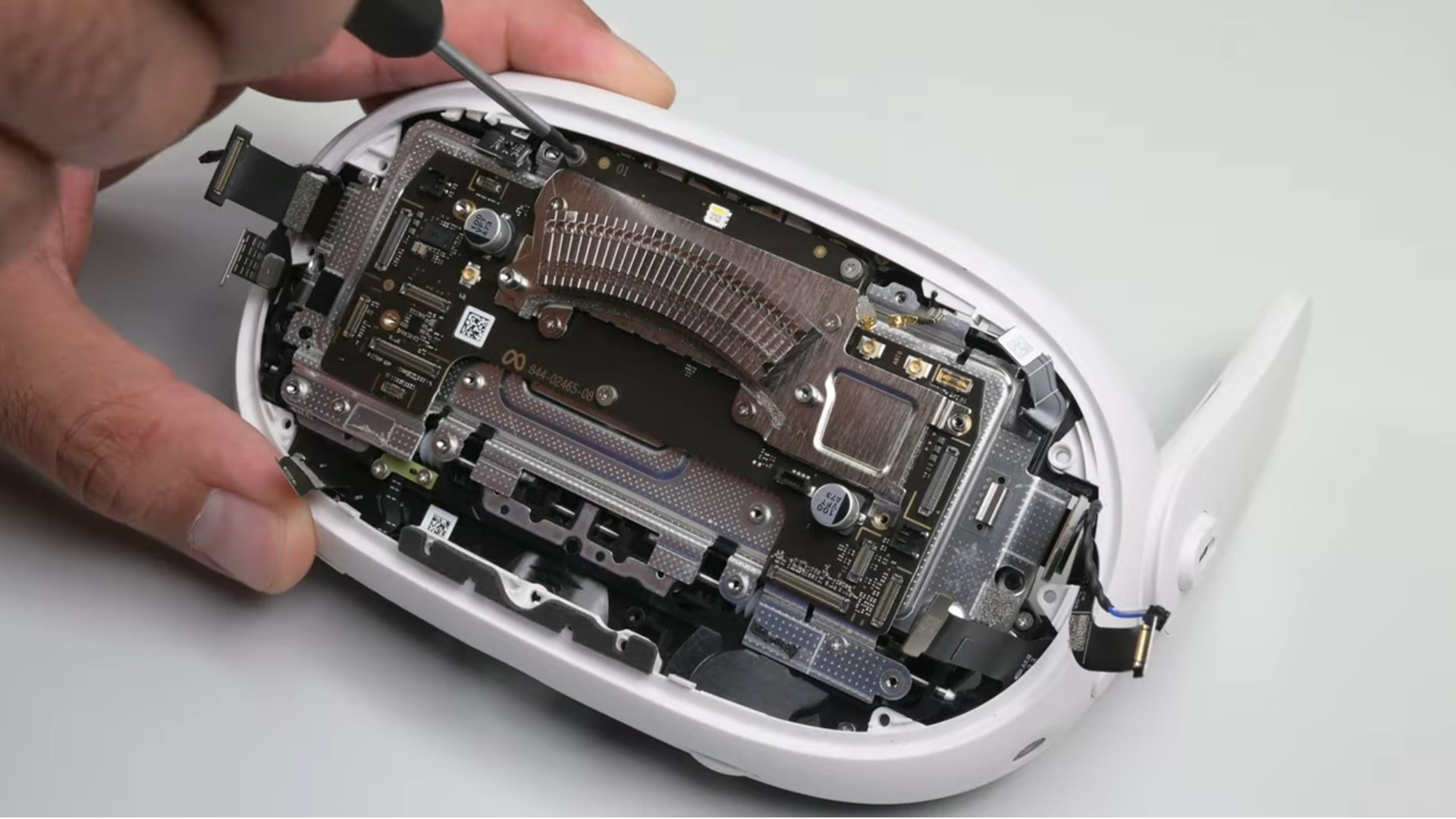Meta Quest 3 teardown video shows lower price doesn’t mean low-quality

We just got a good look at the guts inside a Quest 3 headset. iFixit tore down the VR gear into its individual parts to find out if the device offers good performance for its price point. Short answer: Yes, it does although there are some design flaws that make it difficult to repair.
What’s notable about the Quest 3 is that it has better “mixed-reality capabilities” than the Quest Pro. It's able to automatically map out a room as well as accurately keep track of the distance between objects without needing a “safe space”. The former is made possible by a depth sensor while the latter is thanks to the “time of flight sensor”. iFixit makes the interesting observation that the time of flight components could fit perfectly in the Quest Pro.
It’s worth mentioning Andrew Bosworth, Meta’s Chief Technology Officer, once stated the sensors were removed from the pro model because it added extra “cost and weight” without providing enough benefits.” The Quest 3 is much slimmer, clocking at 512g.

Hardware improvements
Digging deeper into the headset, iFixit offered a zoomed-in look at the LCD panels through a powerful microscope. The screens output a resolution of 2,064 x 2,208 pixels per eye with a refresh rate of 120Hz. This is greater than the Quest Pro’s peak resolution of 1,920 x 1,800 pixels. The video explains that the Quest 3 can manipulate the intensity of color clusters, mixing everything into the high-quality visuals we see. Combining the LCD panels with the time of flight sensor results in a “much better [full-color] passthrough experience” than before.
Additionally, the headset has greater power behind it since it houses the Qualcomm Snapdragon 8 XR2 Gen 2 chipset.
Of course, iFixit took the time to judge the Quest 3 on its repairability and Meta did a good job on that front – for the most part. The controllers are easy to repair as their construction is relatively simple. They’re held together by a few screws, a magnet, and a series of ribbon cables at the top. Replacing the battery is also pretty easy as each half takes a single AA battery.
Awkward repairs
On the headset, it's a slightly different story. The battery on the main unit is replaceable, too. However, it’s located at the center of the device behind 50 screws, multiple coax cables, various connectors, a heatsink, and the mainboard. If you like to do your own repairs on your electronics, it may take you a while to fix the Quest 3.
Sign up for breaking news, reviews, opinion, top tech deals, and more.
Funnily enough, iFixit really makes a good case for why and how the Quest 3 is a better headset than the Quest Pro. Granted, it lacks face and eye tracking, but when you have a more immersive mixed reality, are people really going to miss them? Plus, it's half the price. If the Quest 3 is the new standard moving forward, it makes you wonder how Meta is going to improve on the Quest Pro 2 (assuming it’s in the works).
While we have you check out TechRadar’s list of the best VR headsets for 2023.
You might also like

Cesar Cadenas has been writing about the tech industry for several years now specializing in consumer electronics, entertainment devices, Windows, and the gaming industry. But he’s also passionate about smartphones, GPUs, and cybersecurity.